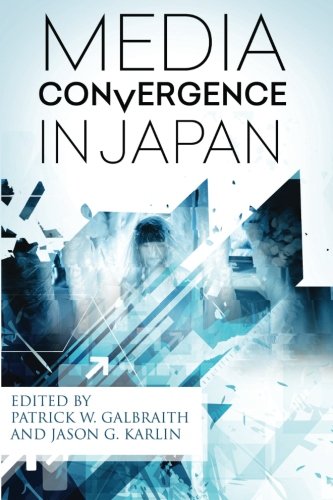Writing
 “Producing Hatsune Miku: Concerts, Commercialism, and the Politics of Peer Production.”
“Producing Hatsune Miku: Concerts, Commercialism, and the Politics of Peer Production.”
Co-authored book chapter in Patrick Galbraith and Jason Carlin’s Media Convergence in Japan (2016). Available on Amazon here.
Excerpt:
Hatsune Miku’s live concerts represent a number of critical tensions within the peer production process: individual participation vs. collective effort, local Japanese community vs. global networked audiences, and fan-generated content vs. corporate-controlled branding. Therefore, this chapter focuses on the official concerts as one lens through which we can view the politics of contemporary media convergence. In particular, these live concerts represent an entry point to understanding how the hybrid dynamics of top-down (producer-to-audience) and bottom-up (audience-to-producer) creative peer production play out between large companies and creative individuals, from artists that lead crowds to produce their artwork to ordinary media consumers and everyone in between.
Conversations with animator Kelly Sears in Animation Studies 2.0, October 24, 2016.
Dialoguing on the Refusal of the Indexical (Part 1 and Part 2)
Excerpt:
To many ‘animated documentary’ sounds like an oxymoron: the genre inherently refuses indexical understandings of ‘the real’ as purported, and highly debated, within photographic documentary practices. Similarly, it is accepted that historical, archival, or found footage imagery may stand in for ‘the real,’ and yet animation as a form resists readings of veracity given the highly constructed, orchestrated re-framings of these materials… It is with this thought in mind that two artists, Tara Knight and Kelly Sears, who identify with more experimental animation and documentary practices, interviewed each other about the refusal of indexicality in how they explore unsteady subjects.
